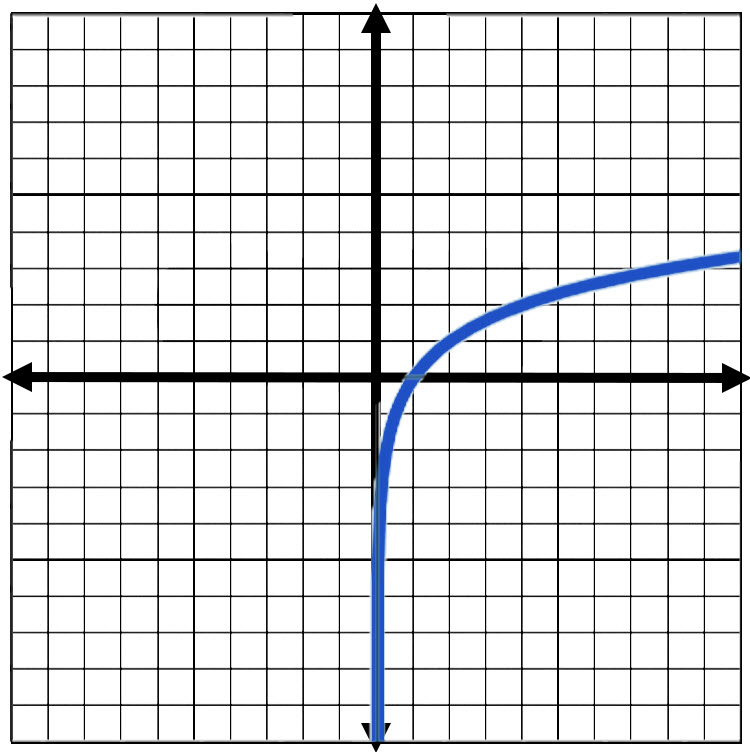Andymath.com features free videos, notes, and practice problems with answers! Printable pages make math easy. Are you ready to be a mathmagician?
Lesson
Practice Problems & Videos
Solve for x.
\(\textbf{1)}\) \(\log_{3}x=2\)
\(\textbf{2)}\) \(\log_{2}(4x)=3\)
\(\textbf{3)}\) \(\log_{4}(3x+1)=2\)
\(\textbf{4)}\) \(\log_{2}(5x)=\log_{2}(2x+12)\)
\(\textbf{5)}\) \(\log_{5}(x+1)+\log_{5}(4)=\log_{5}(24)\)
\(\textbf{6)}\) \(\log_{6}(2x)+\log_{6}(x-1)=\log_{6}(10x)\)
\(\textbf{7)}\) \(\log_{3}(4)-\log_{3}(x)=\log_{3}(2x-2)-\log_{3}(3x+4)\)
\(\textbf{8)}\) \(\frac{1}{2}\log_{}(x^4)-\log_{}(2x-1)=\log_{}(x+2)-\log_{}(3)\)
\(\textbf{9)}\) \(\ln_{}(10x)=\ln_{}(4x+1)+\ln_{}(3-x)\)
\(\textbf{10)}\) \(\log_{6}(8x-4)=2\)
\(\textbf{11)}\) \(\log_{7}(6x-5)=2\)
\(\textbf{12)}\) \(\log_{}(x-1)=\log_{}(5x)-1\)
\(\textbf{13)}\) \(\log_{4}(3x-10)=\log_{4}(8x)-2\)
\(\textbf{14)}\) \(\log_{3}(x^2-2x)=\log_{3}(2-x)+2\)
\(\textbf{15)}\) \(\log_{2}(x+1)+\log_{2}(x-1)=\log_{2}(2x+2)+1\)
\(\textbf{16)}\) \(\log_{5}10+\log_{5}x=\log_{5}25+1\)
See Related Pages\(\)
\(\bullet\text{ Logarithmic Form & Exponential Form}\)
\(\,\,\,\,\,\,\,\,\log_{b}(a)=c \rightarrow b^c=a…\)
\(\bullet\text{ Evaluating Logarithms}\)
\(\,\,\,\,\,\,\,\,\log_{2}(8)…\)
\(\bullet\text{ Expanding Logarithms}\)
\(\,\,\,\,\,\,\,\,2\log_{b}(x)+\log_{b}(z)-5\log_{b}(y)…\)
\(\bullet\text{ Decibel Problems}\)
\(\,\,\,\,\,\,\,\,N_{dB}=10\log \left(\frac{P}{10^{-12}}\right)…\)
\(\bullet\text{ Earthquake Problems}\)
\(\,\,\,\,\,\,\,\,M=\log\frac{I}{10^{-4}}…\)
\(\bullet\text{ Domain and Range Logarithmic Functions}\)
\(\,\,\,\,\,\,\,\,f(x)=log(x) \rightarrow \text{Domain:} x\gt0… \)
\(\bullet\text{ Graphing Logarithmic Functions}\)
\(\,\,\,\,\,\,\,\,f(x)=log_{2}(x)\) 
\(\bullet\text{ Solving Logarithmic Equations}\)
\(\,\,\,\,\,\,\,\,\log_{2}(5x)=\log_{2}(2x+12)…\)
\(\bullet\text{ Inverse of Logarithmic Functions}\)
\(\,\,\,\,\,\,\,\,f(x)=log_{2}(x) \rightarrow f^{-1}(x)=2^x\)
In Summary
A logarithm is a mathematical function that represents the exponent to which a base must be raised in order to yield a given number. We learn about logarithmic equations in order to be able to solve problems involving exponential growth or decay. These types of problems are commonly found in fields such as finance, biology, and physics.
Logarithmic equations are typically covered in a high school or college-level math class, such as precalculus or calculus.
Some common mistakes when working with logarithmic equations include forgetting to use the correct base for the logarithm, mixing up the order of operations, and forgetting to include the proper parentheses.
Logarithmic equations were invented in the early 17th century by John Napier, a Scottish mathematician and theologian. Napier’s work with logarithms greatly simplified calculations involving exponential growth and decay. Specifically solving for any variables that are in the exponents. In addition to their practical applications, logarithmic equations have also played a significant role in the development of modern mathematics.
5 Real World Examples of Logarithmic Equations
Sound Intensity: The intensity of sound is measured in decibels \((dB)\), and the formula for calculating the intensity level in \(dB\) is \(I = 10 \log (P/P_0)\), where \(P\) is the intensity of the sound and \(P_0\) is a reference intensity. This formula demonstrates the logarithmic relationship between the intensity of a sound and its corresponding decibel level.
Richter Scale: The Richter scale is a logarithmic scale used to measure the magnitude of earthquakes. The formula for calculating the magnitude of an earthquake on the Richter scale is \(M = \log(A/T)\), where \(A\) is the amplitude of the seismic waves and \(T\) is a reference amplitude. This formula demonstrates the logarithmic relationship between the magnitude of an earthquake and the amplitude of the seismic waves it produces.
\(pH\) Scale: The \(pH\) scale is a logarithmic scale used to measure the acidity or basicity of a solution. The \(pH\) of a solution is calculated using the formula \(pH = -\log H+\), where \(H+\) is the concentration of hydrogen ions in the solution. This formula demonstrates the logarithmic relationship between the acidity of a solution and the concentration of hydrogen ions it contains.
Exponential Decay: In many real-world situations, the rate of decay of a substance or phenomenon follows an exponential decay curve. For example, the half-life of a radioactive isotope is the time it takes for half of the original amount of the isotope to decay. The formula for calculating the remaining amount of a substance after a given time \(t\), given an initial amount \(P\) and a decay constant \(k\), is \(A = P e^{-kt}\). This formula demonstrates the logarithmic relationship between the remaining amount of the substance and the time elapsed since the decay began.
About Andymath.com
Andymath.com is a free math website with the mission of helping students, teachers and tutors find helpful notes, useful sample problems with answers including step by step solutions, and other related materials to supplement classroom learning. If you have any requests for additional content, please contact Andy at tutoring@andymath.com. He will promptly add the content.
Topics cover Elementary Math, Middle School, Algebra, Geometry, Algebra 2/Pre-calculus/Trig, Calculus and Probability/Statistics. In the future, I hope to add Physics and Linear Algebra content.
Visit me on Youtube, Tiktok, Instagram and Facebook. Andymath content has a unique approach to presenting mathematics. The clear explanations, strong visuals mixed with dry humor regularly get millions of views. We are open to collaborations of all types, please contact Andy at tutoring@andymath.com for all enquiries. To offer financial support, visit my Patreon page. Let’s help students understand the math way of thinking!
Thank you for visiting. How exciting!